Mars - A Really, Really Stupid Idea
Mars - A Really, Really Stupid Idea
A Billionaire's Folly, Wasting Time Money & Lives
Mars, Mars, Mars!!!
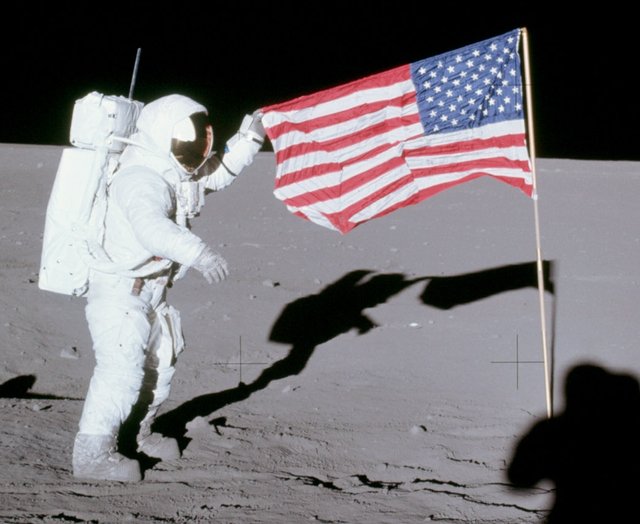
Photo Credit: NASA
Since the Apollo Moon Landings in the 1960's and 70's, generations both before and after, have dreamed of conquering the Red Planet.
Dreamers imagine planting their Nation's Flag in the virgin soil and having their name added to the list of significant human explorers. Great progress in science will follow and eventually colonists will land, never to return to Earth.
Finally mankind will begin to reach out across the solar system and eventually to the stars. Civilization will have a foothold on another, perhaps better world, as we usher in a second chance to do everything right.
STOP - This a really Stupid idea and I will explain why
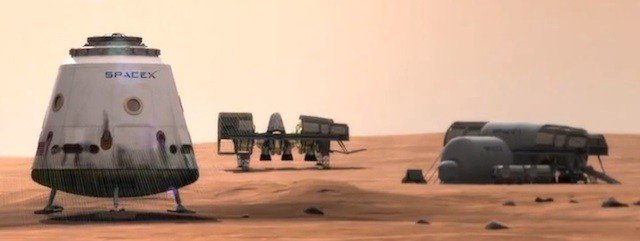
Photo Credit: theawl.com
Now let's be clear, there are some really, really smart people working on getting humanity to Mars in this century, Dr. Robert Zubrin of the Mars Society, Space-X's Elon Musk, NASA and the Mars One Group are the major players in the quest to get humans to the red planet.
So let's say we do it, go to Mars; 6 months to get there, 12 months on the surface and 6 months to get back. Forget the destination for a moment, this epic journey will be a huge accomplishment in and of itself. The longest a human has spent in low Earth orbit has been a record of 879 days (2.4 Years), being held by Cosmonaut Gennady Padalka.
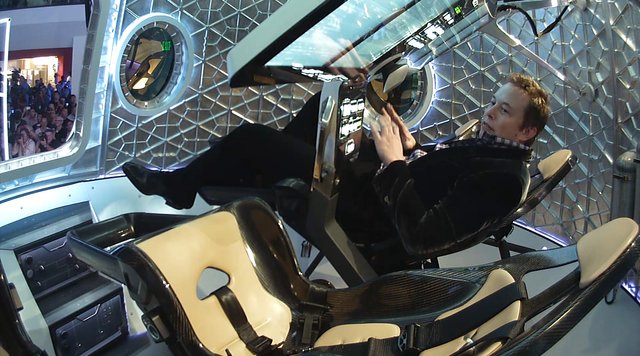
Photo Credit: Space-X
The prospect of up to 4 people living and working in space and on the surface of another planet for up to 2 years is almost unfathomable. The hard part will be physically recovering after the 6 months space flight to Mars, then working/living in the low gravity (0.38 of Earth's) Martian environment for a year.
The stress of low G-Forces have on the human body are extreme. They include bone loss, loss of muscle mass, especially in the lower legs, increases in the amount of brain fluid in the cranial cavity and eyes that actually change shape. There is also a potential mental component that needs to be addressed from being "trapped" inside small spaces for years.
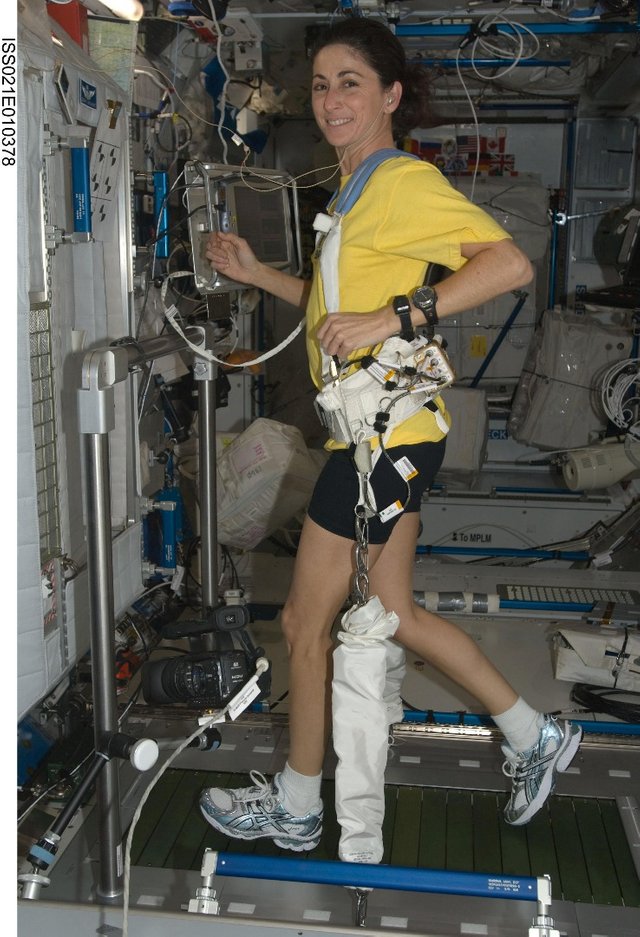
Photo Credit: NASA
International Space Station residents are required to do 2 hours of intense workouts, each day, to try and counter act the effects of zero gravity. Despite this daily effort, once returned to Earth gravity, these healthy men and women are basically feeble cripples, who may or may not have lasting health effects.
Although Science Fiction would suggest that we can generate spin gravity during the journey to and from Mars, no long term medical data exists to say whether this will alleviate the stress of low-g on the astronaut's body and mind. Although there is little doubt that spin gravity will make daily life much easier, than living in zero-g.
So let's say everything goes as planned, after spending $80 - $100 Billion USD (today's dollars), we will know more about Mars than ever before. Rocks and soil samples are returned to Earth and maybe even a form of primitive life or past life will be found.
Based on past government programs, expect the cost to double up to $200 Billion.
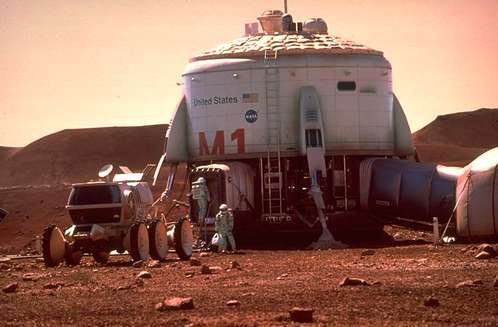
Photo Credit: OoCities
12 Months on the surface is a long time and a lot will be done in that period to expand our knowledge base. Astronauts can do more than any rover can, given the same amount of time.
The problem with this strategy is time. Of the rovers and probes that have been sent to Mars, most have been destroyed or simply failed to function shortly after arrival. A successful landing is far from a certainty.
Graveyard of Space
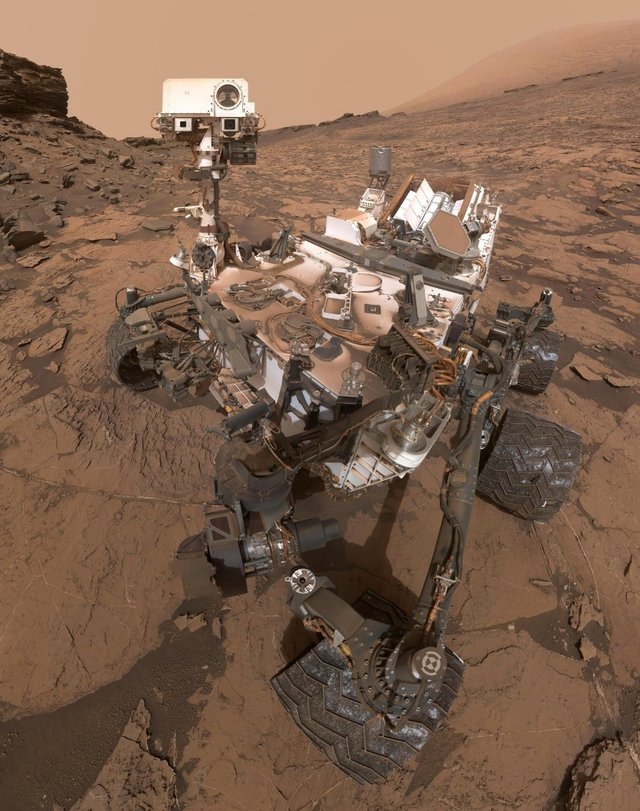
Photo Credit: Nasa/JPL
Russia, the U.K. and the European Space Agency have failed to successfully land a probe that actually was operational for more than seconds or a few hours at best. Many have simply crashed.
NASA has had their share of failures as well, however they have also had great success, starting with the Viking Landers way back in 1976.
Note: Mars days or "Sols", are 24 Hours and 39 minutes in comparison to an Earth Day of 24 Hours
Viking 1 Lander - Operated from 1976 to 1982 - 2,245 Sols
Viking 2 Lander - Operated from 1976 to 1980 - 1,281 Sols
Sojourner Rover (Pathfinder) - Landed 1997 - Rover - 83 Sols
Phoenix Rover - Landed 2008 - 155 Sols
Spirit Rover - Operated from 2004 - 2010 - 2,210 Sols
Opportunity Rover - Landed 2004 - 4,758 Sols+ (Still Operational)
Curiosity Rovers - Landed 2012 - 1,726 Sols+ (Still Operational)
Total Number of Sols is 12,458 or around 34 Years. Putting humans on Mars will cost much more than all of these craft combined and will add one 1 year to our time on the planet.
That's a little bang for our big bucks, but scientists and their political masters will be able to "Check the Box", the history books will mark this accomplishment for all eternity. We can all celebrate with pride that Mars has been "conquered" at great cost and hopefully without loss of life.
Like the Apollo program, it will be very difficult to make the case for further manned missions. Money will be needed for other things and budgets will be slashed. Humanity will revert to sending unmanned probes and rovers.
Adult's Reality vs. Children's Fantasy
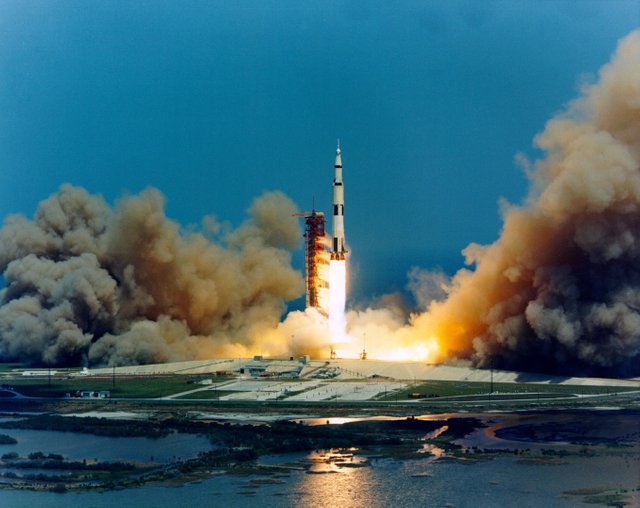
Photo Credit: gbphotodidactical.CA
Much was made of the Apollo program and its impact on science and the economy in both the short and the long term. Generations were inspired to create and become scientists and engineers. The attitude that anything was possible pervaded society and was reflected in the popular saying of the time, "If we can put a Man on the Moon we can do..."fill in the blank".
It is not and overstatement to say that the space race "Changed the World".

Photo Credit: Euromaidan Press
In contrast to Apollo, the technology that we will need for a Mars Mission is very similar to what we needed for the Moon Mission. The materials and the advanced computers needed for a Mars flight are likely to be based or the latest game console and camping gear. Technology transfer to the civilian world will be minimal.
The problem with the Mars program is that it is a huge hole, sucking up tons of money and resources, while not providing anything of real value in return.
Although similar valid arguments were made against Apollo, the waging of the Cold War and the strategic value of being able to occupy the "High Ground" of Space, outweighed those objections. The United States simply couldn't tolerate a Soviet occupied Moon, no matter the cost.
The Right Road to take us to the Stars
Mars is a dry cold rock. Although science has claimed to detect some traces of water, it is not enough to make the planet truly habitable.
The low gravity will prevent humans or what we now view as humans from living and successfully breeding. If and its a big "if" humans are actually able to procreate in Low-G. certainly their offspring will be essentially a different species from "Earth Humans". therefore establishing a human colony on Mars is not a viable option.

Photo Credit: crystalinks.com

Photo Credit: Snopes.com
Besides the biological issues, what does Mars offer humanity??? It's a fair question. Will we find find rare minerals? Even if we did, the cost to get them back to Earth would be likely prohibitively expensive.
Certainly will won't find a cure for disease, as Mars is simply a dead planet. Discovery of an ancient alien civilization? Not likely and if we did find Aliens, the government will keep it a secret, guaranteed.
O.K. Smart Guy, Where Should We Go
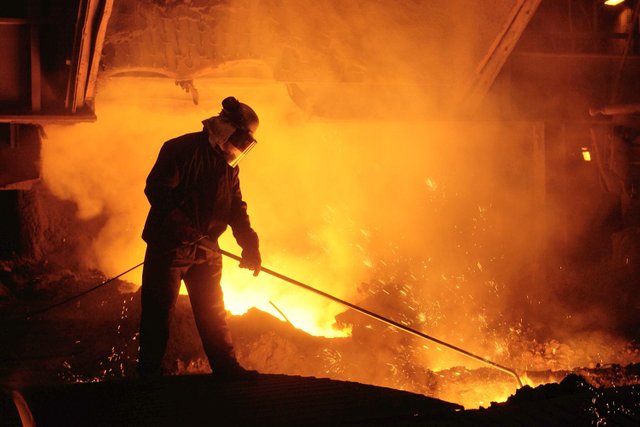
Photo Credit: iran-banner.com
Steel Mills, Chemical Plants and Petri Dishes are the real future of Space Exploration.
Steel is estimated to be only 1/7th is potential strength and can alloyed in low and zero-g to meet various needs on Earth. This experimentation and production can only be done in space. Other metals and alloys have similar unrealized potential as do other materials and chemicals.
Medicine and the biological sciences are capable of many great discoveries, once we have permanent labs outside of Earth. Besides actual discoveries, await, new "mistakes"; like Kevlar, Penicillin, Lexan and Viagra, etc. await us as well.

Photo Credit: State of Michigan
Real Work = Real Money
Real Money = Equals more Space Exploration and Exploitation

Photo Credit: Exxon Mobile
Forget about Star Trek and Star Wars and your new Space Utopia. Real Space Pioneering is going to be dirty, dangerous and really messy. Idealism will take a back seat to profits.

Photo Credit: SyFy
The more real money that can be gained the greater the reason to invest more and more dollars into exploiting the riches of our solar system.
More Power Scotty

Photo Credit: Paramount
The close proximity of the space station to the sun (the same as the Earth), allows for more efficient solar installations. Crops and decorative foliage can be grown with natural sunlight, without the need for auxiliary light sources, saving energy.
Because of the industrial nature of the station, Nuclear power is a must. Orbiting a modern Naval Nuclear Reactor is absolutely required. Currently, modern off-the-shelf fission naval reactors have a 30 year plus operational life before disposal/refueling. The cooling system will need to be designed for space, however waste heat from the reactor can be used for environmental control and industrial heating use.
The United Sates Navy also equips its submarine fleet with advanced carbon scrubbers that turn exhaled carbon dioxide into bricks, that can be stored or used for industrial or agricultural purposes, as needed.
O.K. You have a Space Station, now what.
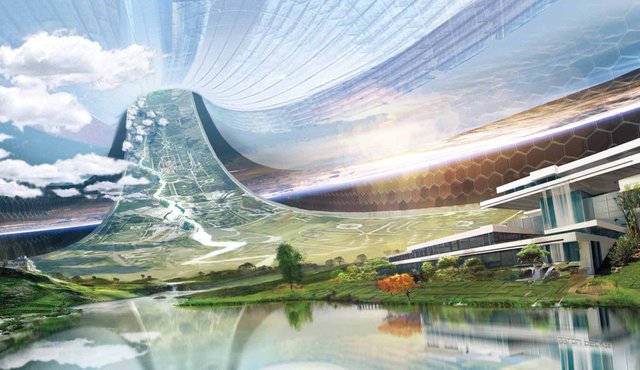
Photo Credit: Amazon
Our Solar System is simply littered with valuable minerals floating around in space. The mineral wealth contained in asteroids belt, between Mars and Jupiter is estimated to be worth approximately $100 billion dollars for every person living on Earth today. This is simply a staggering amount of money, but very far away, right now.
In contrast to the asteroids in the belt, near Earth Asteroids are much closer and also contain a great abundance of materials and riches. All known near Earth objects add up to 15,471, with around 53 due to arrive within the next 12 months.
Close Approach Data Link:
https://cneos.jpl.nasa.gov/ca/
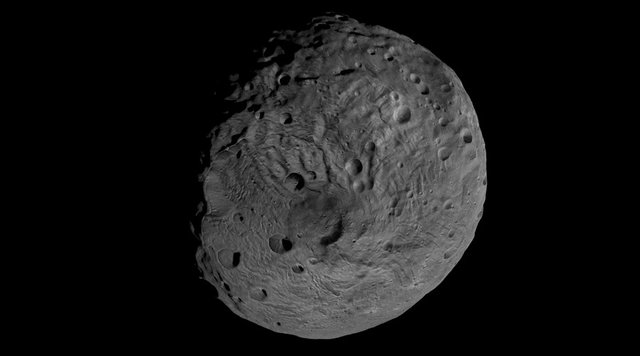
Photo Credit: rt.com
Just one asteroid, named 2011 UW158, estimated to be carrying up to 90 million tons of platinum in its core, as well as other rare and precious materials, could pay for the entire station, however that much platinum dumped on the market would lead to a massive price drop of the metal. This new lower price paradigm would allow the use of this formerly expensive metal in other applications.
Getting refined metals and and goods to the surface of the Earth is relatively cheap and requires simple, low tech heat shields and parachutes. Goods being lifted to the space station would be much more expensive, however launch prices would lessen as time went on and technology improved.
Comets contain water ice which can be converted into hydrogen and oxygen for spacecraft fuel, as well as for agriculture. Many of these comets return at know intervals to the inner solar system and can be exploited today.
Conclusion
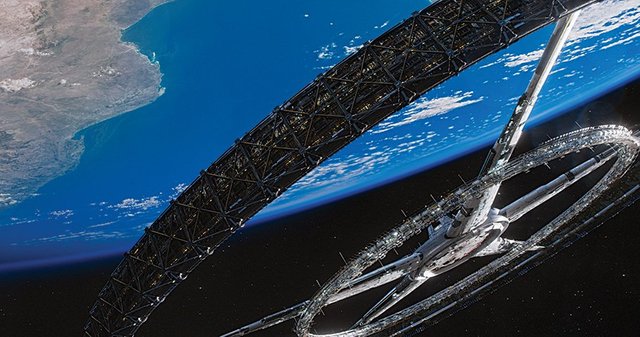
Photo Credit: Pop Verse
If you are going to spend $100's of Billions of dollars on moving humanity into space, there needs to be a more compelling reason than "Just Because".
Humanity deserves more than a "Box of Mars Rocks" and 4 new Celebrity Astronauts.
If you have any questions, don't hesitate to ask. And if you liked this post Please VOTE UP, RESTEEM, COMMENT and FOLLOW @clearshado for more Insightful Commentary in Support of Liberty and Freedom, Natural Rights, Alt Currency, Preparedness, Survival & Guns.
You have made some strong arguments here ! We live in such times where we will most likely see humanity travel far away from their home planet, it really is interesting just to think about it. But in reality, you are right. If humans reproduce out there would the babies be human ? This definitely made me think !
Thanks for reading and your reply.
I really appreciate it.
It is true what you wrote, it is an absolutely dumb idea. Instead of wasting all that money on the MARS why not spend it on your own homeland EARTH. Researching in medicals would help fighting in various kinds of diseases people are suffering from. Why not spend it cleaning the oceans. The Truth is Earth is our home and we need to take care of it, instead of running away from it. I think it will be a good idea to spend all that BIG money and precious time on EARTH rather then on a MOON or MARS.
I think you make a valid argument. Money can always be "spent" to help those in need or to address issues like pollution, over-population, etc. Thanks for taking the time to read and comment.
The difference is real spending vs. real investing. A lot of next generation technologies require a large infusion of capital to get things started, in the past this has been provided by the very wealthy and/or government .
A good example of this is the entire computer industry, which was started by the British in World War 2, simply to break German coded messages. The money, scientists and equipment had no real purpose at that time, other than for spying and war.
War is a bad thing, however it sometimes drives innovation that changes our society; computers, nuclear power, space exploration, etc. I am in no way advocating war, but history is history.
If the same money was spent on charity, perhaps we would only now be seeing computers entering the realm of science fact. maybe not.
Creating new industries and opportunities helps everyone, directly and indirectly. Shifting industries like mining and smoke stack manufacturing to space, will definitely help the environment on Earth. Just like the computer revolution changed everyone's lives and continues to provide opportunity for millions, so will space. We need a jump start and large capital infusion to get a real permanent space station built, but once it is operational and profitable, we will wonder why it was not done earlier.
Perhaps most importantly, having a lot of technology and "eyes" in the sky, looking for profitable asteroids to mine, could save our planet. Having technology in daily operation that can capture, move and detect large space objects, perhaps will be able to save us from a "Killer Asteroid Event", that is 100% coming to Earth sometime in the (distant, I hope) future.
Very Good Post, We human being are unstoppable in nature. We make impossible to possible from the beginning. We started where our ancestor stopped. So one day our astrounat will find the proper way and they must put their feet to not only Mars but beyond Mars also. Always think positively.
The Elites love to play God, one of their bright ideas is to nudge an asteroid towards Mars, to accelerate the warming of the planet, so they say, i do believe there is life on Mars right now, and if they were to nudge an asteroid towards Mars it would create an extinction of life there, and then the all mighty Gods of Earth could start fresh with humans and create a slave planet 2.0
of the planet, so they say, i do believe there is life on Mars right now, and if they were to nudge an asteroid towards Mars it would create an extinction of life there, and then the all mighty Gods of Earth could start fresh with humans and create a slave planet 2.0
:)